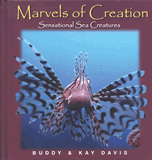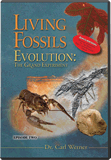The history of the coelacanth fish is quite amazing. According to the evolutionary interpretation of the fossil record, this fish dates back to over 380 million years. It died out approximately 80 million years ago at the time of the dinosaurs. No more fossils were found, but in December of 1938, a live coelacanth was caught in South Africa at the mouth of the Chalumna River. It sent such a shock wave in scientific circles that it was named the zoological discovery of the century. More fish were documented between South Africa and Madagascar.
Another population of coelecanth was found on July 30, 1998, in northern Sulawesi, Indonesia. Biologists learned that this fish has been sold in fresh fish markets in that area all along. The locals even had a name for it—“rajalaut”—which means “king of the sea.” The only apparent difference between the African coelecanth called Comoros coelacanth and the Sulawesi Indonesian coelacanth is the color. The African fish is steel blue while the Sulawesi is brown. Scientists now wonder if there are more coelacanths awaiting discovery.
The coelacanth is referred to as a living fossil. When scientists predict evolutionary linage of extinct unknown animals, it is based on their beliefs of the past. The coelacanth was believed to be the ancestor of tetrapods (land-living animals in which human were included). It was thought they lived in shallow water which led their ancestors eventually to take their first step on dry land. Some scientists believed the fins of the coelacanth were primitive first stages of arms and legs. Some biologists thought the coelacanth probably used its fins to crawl along the bottom of the shallow water. Remember, these theories were based only on fossil evidence.
When the living fossil was observed, they were wrong. The coelacanth does not use its fins (which aren’t primitive) to crawl along the bottom. It is a swimmer. No way was the coelacanth ready to crawl out on land. It lives in deep water at about 600 feet (200 m). They inhabit overhangs, caves, volcanic islands, and vertical reefs where the water is deep.
The coelacanth is a heavily scaled fish and unusual in that the tail has an extra lobe on the end. It is the only living animal that has an intercranial joint separating its brain and ear from the eye and nasal organs. The unique design allows the fish to lift and move the front part of its head when feeding.
Coelacanth
Osteichthyes • Sarcopterygian
Crossopterygii, Latimeria Chalumnae
Weight: up to 200 pounds (90 kg)
Life Span: unknown
Special Design Feature: The coelacanth is the
only living animal that can lift and move the
front part of its head when feeding.
Did You Know? The coelacanth was thought
to have died out at the time of the dinosaurs.
In 1938, it was found alive and well and was
the zoological find of the 20th century.

Marvels of Creation: Sensational Sea Creatures
Brings the world of the sea alive in a unique and colorful way with photographs, a page of facts and commentaries.
Browse Kids BookRecommended Resources
- © 2025 Answers in Genesis
- Privacy Policy
- Contact
- About



